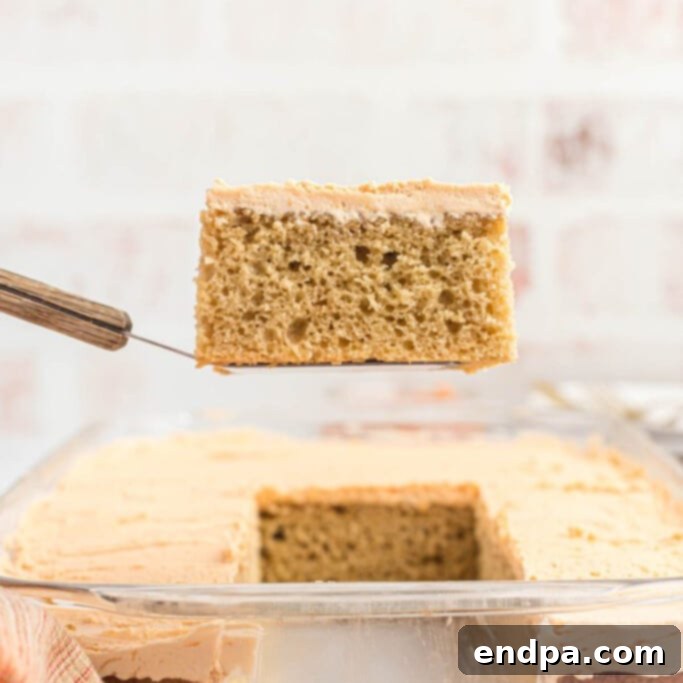Indulge in the sheer delight of a Butterscotch Cake Recipe, a truly luscious dessert crowned with a rich, velvety butterscotch frosting. This comprehensive guide will walk you through the simple steps to create a homemade cake that is wonderfully light, impossibly fluffy, and bursting with classic butterscotch flavor.

There’s something uniquely comforting and nostalgic about butterscotch, a flavor profile that evokes warm memories and sweet indulgence. This particular butterscotch cake recipe simplifies the baking process, proving that creating an impressive dessert from scratch doesn’t have to be complicated. The result is a dessert so profoundly delicious, with its perfect balance of sweetness and deep caramel notes, that every single person will eagerly ask for another slice.
The cake itself boasts an incredibly moist crumb, thanks to carefully selected ingredients, ensuring each bite is a tender revelation. It’s infused with an abundance of pure butterscotch flavor that shines through without being overpowering. Complementing this magnificent base is a rich, decadent frosting, also packed with authentic butterscotch. This harmonious combination creates a truly heavenly experience, characterized by a light and fluffy texture that melts in your mouth.
If you’re a devoted fan of butterscotch, you’ll be thrilled to explore more recipes that celebrate this iconic flavor. Be sure to try our delightful Butterscotch Cookies for a chewy treat or our rich Butterscotch Brownies for a fudgy indulgence. For those looking to expand their cake repertoire beyond butterscotch, our intriguing Chocolate Mayonnaise Cake offers a surprisingly moist and delicious alternative.
Table of Contents
- Why We Love This Recipe
- Essential Ingredients
- Cake Ingredients
- Frosting Ingredients
- Equipment Needed
- How to Make Butterscotch Cake
- Expert Baking Tips for Success
- Storage and Make-Ahead Options
- The Science Behind Room Temperature Ingredients
- Frequently Asked Questions (FAQ)
- More Irresistible Butterscotch Recipes
Why We Love This Butterscotch Cake Recipe
This butterscotch cake isn’t just another dessert; it’s a culinary triumph that will earn you rave reviews. Here’s why this recipe deserves a prime spot in your baking collection:
- Effortlessly Homemade: This recipe demystifies homemade baking, making it incredibly accessible even for beginners. Using common pantry staples, you can create a show-stopping cake without any fuss. The steps are clearly laid out, ensuring a smooth and enjoyable baking experience from start to finish.
- A Symphony of Rich Flavors: The combination of the deeply flavored cake and the luxurious butterscotch frosting creates an unparalleled taste experience. The distinct caramel notes from the dark brown sugar in the cake marry perfectly with the sweet, buttery richness of the frosting, delivering a dessert that truly satisfies.
- Simple Sheet Cake Convenience: Forget the stress of elaborate cake layers! This recipe utilizes a practical 9×13-inch baking dish, eliminating the need for stacking, leveling, or intricate assembly. It’s designed for simplicity and convenience, making it ideal for busy home bakers, potlucks, or family gatherings where ease is key.
- Irresistible Texture: Beyond its incredible taste, this cake boasts a heavenly texture. It’s remarkably moist and tender, a result of the careful ingredient balance, while maintaining a wonderfully light and fluffy crumb. The frosting adds another layer of creamy indulgence, making every bite a delightful contrast of textures.
- Perfect for Any Occasion: Whether you’re celebrating a birthday, hosting a dinner party, or simply craving a comforting dessert, this butterscotch cake fits the bill. Its crowd-pleasing flavor and straightforward presentation make it a versatile choice for any event, big or small.
Essential Ingredients
Crafting the perfect butterscotch cake begins with understanding the role each ingredient plays. Quality ingredients, especially when brought to the correct temperature, are key to achieving the cake’s signature moistness and flavor.

For the Cake:
- All-Purpose Flour: The foundation of our cake’s structure. For accurate measurement, spoon the flour into your measuring cup and level it off with a straight edge, rather than scooping directly from the bag. This prevents over-measuring and ensures a light, tender crumb.
- Baking Powder: A crucial leavening agent that works with baking soda to give the cake its lift and airy texture. Ensure your baking powder is fresh for optimal results.
- Baking Soda: This leavening agent reacts with the acidic sour cream and brown sugar to create carbon dioxide, resulting in a beautifully risen, tender cake. If you’re out, consider these Best Baking Soda Substitutes.
- Salt: A pinch of salt enhances all the other flavors, balancing the sweetness and adding depth to the butterscotch profile.
- Unsalted Butter: Softened at room temperature, butter is essential for a rich flavor and a tender texture. Using unsalted butter allows you to control the overall salt content of your cake.
- Dark Brown Sugar: This is where much of the butterscotch flavor comes from, imparting deep caramel notes and extra moisture to the cake. It must be packed firmly into the measuring cup. For an even more homemade touch, you can try our Homemade Brown Sugar Recipe.
- Large Eggs: At room temperature, eggs emulsify better with the butter and sugar, contributing to a smoother batter and a more uniform, tender cake structure.
- Whole Milk: Room temperature whole milk adds essential moisture and richness, helping to create a tender crumb.
- Vanilla Extract: Pure vanilla extract offers the best flavor, complementing the butterscotch beautifully. Avoid imitation vanilla for superior results.
- Sour Cream: Also best at room temperature, sour cream is a secret ingredient for exceptional moistness and a slight tang that balances the sweetness. It contributes to a tender, fine crumb and helps activate the baking soda.
For the Frosting:
- Butterscotch Chips: The star of our frosting, these chips melt down to create an incredibly flavorful, authentic butterscotch taste. Use a high-quality brand for the best results.
- Unsalted Butter: Softened at room temperature, butter forms the creamy base of our buttercream frosting, ensuring a smooth and spreadable consistency.
- Powdered Sugar: Also known as confectioners’ sugar, this provides sweetness and structure to the frosting. Sifting it before use is crucial to prevent lumps and achieve a perfectly smooth, silky texture.
- Vanilla Extract: A touch of vanilla enhances the overall flavor of the butterscotch frosting, adding a layer of aromatic depth.
- Milk: A small amount of milk helps achieve the desired consistency for the frosting, making it wonderfully creamy and easy to spread.
Equipment Needed
Having the right tools at hand will make your baking process smooth and enjoyable. Here’s a list of essential equipment for this butterscotch cake:
- 9×13 inch baking pan
- Large mixing bowls (at least two)
- Medium mixing bowl
- Whisk
- Electric hand mixer or stand mixer
- Measuring cups and spoons
- Rubber spatula
- Wire cooling rack
- Offset spatula (for frosting)
- Toothpicks
- Microwave-safe bowl (for melting butterscotch chips)
How to Make This Delicious Butterscotch Cake
Follow these simple, detailed steps to bake your magnificent butterscotch cake from scratch. Precision and patience are your best friends in the kitchen!
For the Cake:
- Step 1 – Prepare the Oven and Pan: Begin by preheating your oven to 350°F (175°C). While the oven heats, lightly spray a 9×13-inch baking pan with a non-stick cooking spray. For extra assurance against sticking and easy removal, you can also line the bottom with parchment paper, leaving an overhang on the sides.
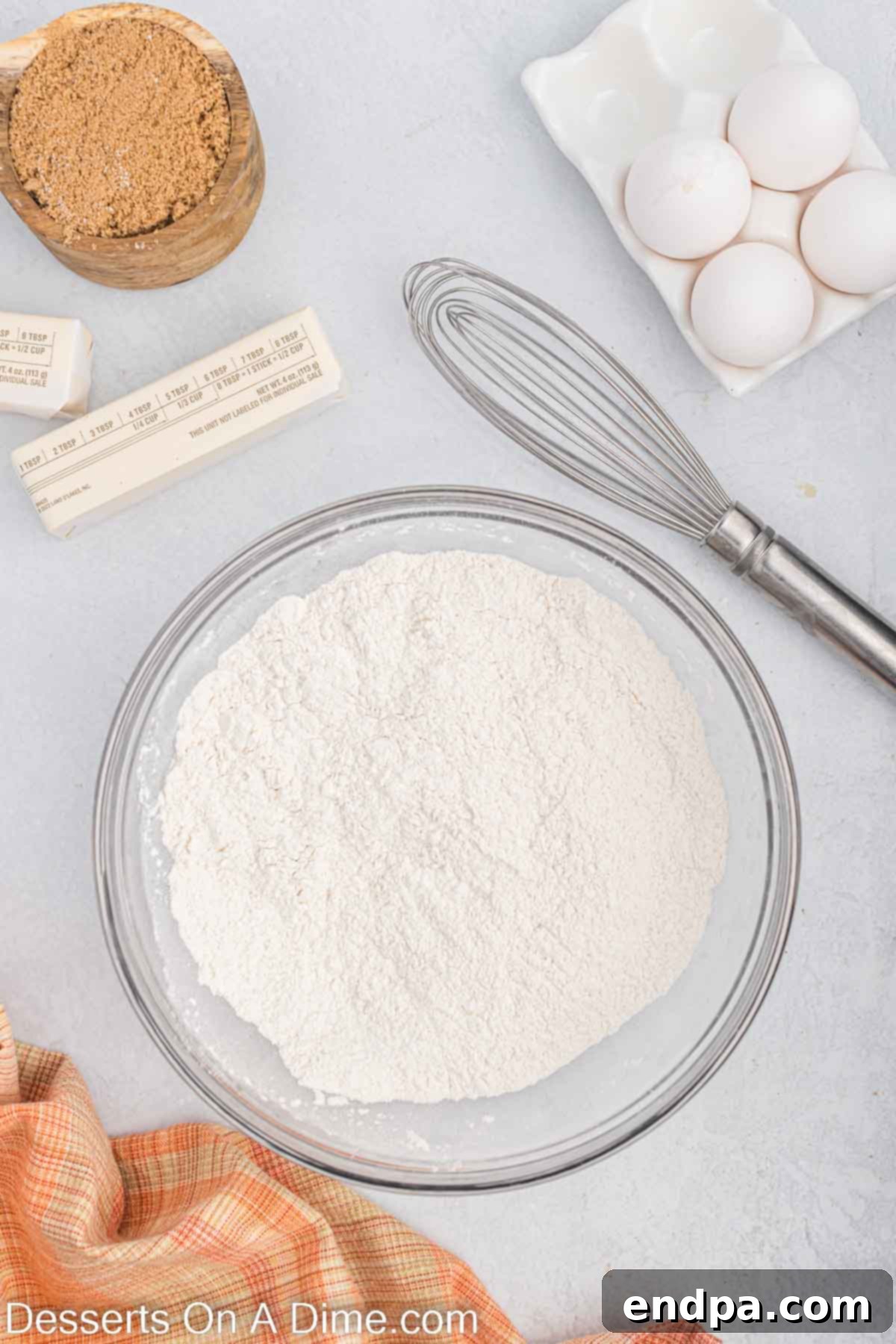
Step 2 – Combine Dry Ingredients: In a medium-sized mixing bowl, whisk together the all-purpose flour, baking powder, baking soda, and salt. Whisking not only combines them but also aerates the flour, contributing to a lighter cake. Set this mixture aside.
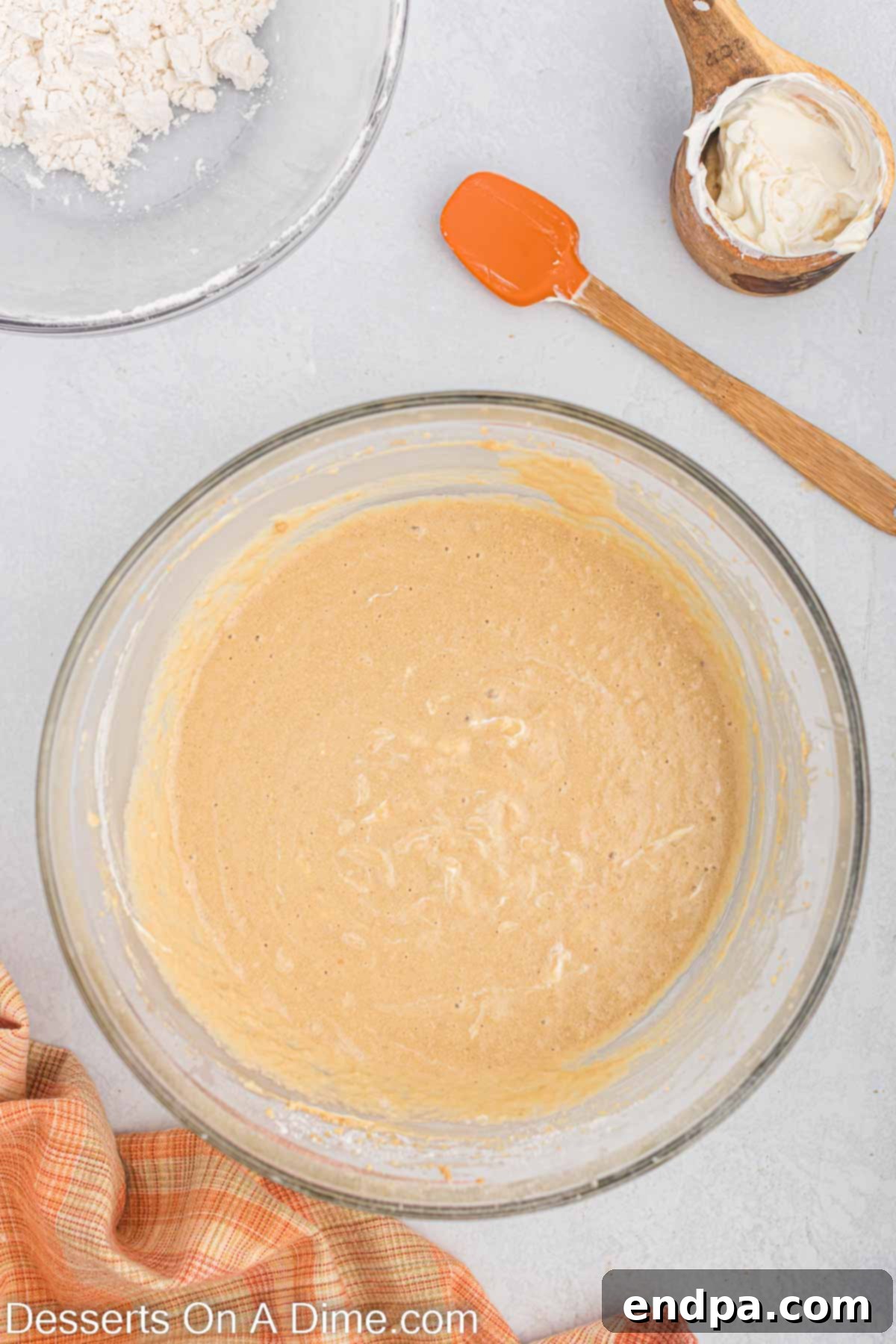
Step 3 – Prepare Wet Ingredients: In a separate, large mixing bowl, using either a stand mixer fitted with the paddle attachment or a hand mixer, cream together the softened unsalted butter and packed dark brown sugar on medium speed. Beat until the mixture is light, fluffy, and significantly paler in color, which usually takes about 3-5 minutes. This incorporates air, making the cake tender. Next, add the large eggs one at a time, beating well after each addition until fully incorporated. Scrape down the sides of the bowl as needed. Once the eggs are mixed in, stir in the whole milk and vanilla extract until just combined.

Step 4 – Combine Wet and Dry, Then Bake: Gradually add half of the dry ingredient mixture to the wet ingredients, mixing on low speed until just combined. Be careful not to overmix. Then, gently fold in half of the room temperature sour cream. Repeat this process with the remaining dry ingredients and sour cream, mixing until just barely incorporated and no streaks of flour remain. Pour the smooth cake batter evenly into your prepared 9×13-inch baking pan. Bake for 30-40 minutes, or until a toothpick inserted into the center of the cake comes out clean. Once baked, remove the cake from the oven and let it cool completely on a wire rack within the pan. This is crucial before frosting.
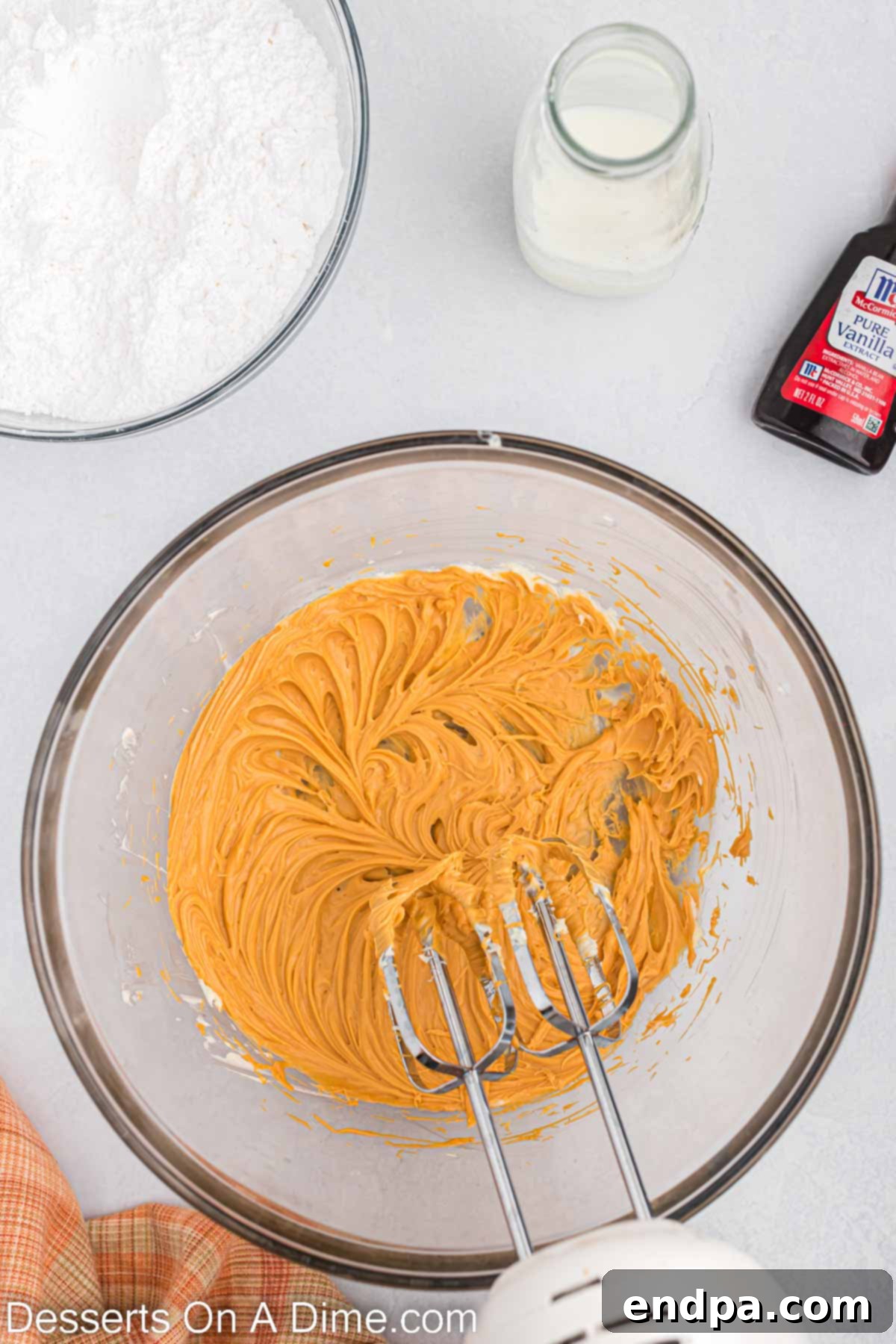
Step 5 – Prepare the Butterscotch Base for Frosting: While your cake is cooling, it’s time to make the luscious butterscotch frosting. Place the butterscotch chips in a microwave-safe bowl. Microwave on medium heat in 30-second intervals, stirring thoroughly after each interval, until the chips are completely melted and smooth. Be careful not to overheat, as chocolate (and butterscotch chips) can seize. Once melted, set the bowl aside for 5-10 minutes to allow the melted butterscotch to cool slightly and thicken a bit.
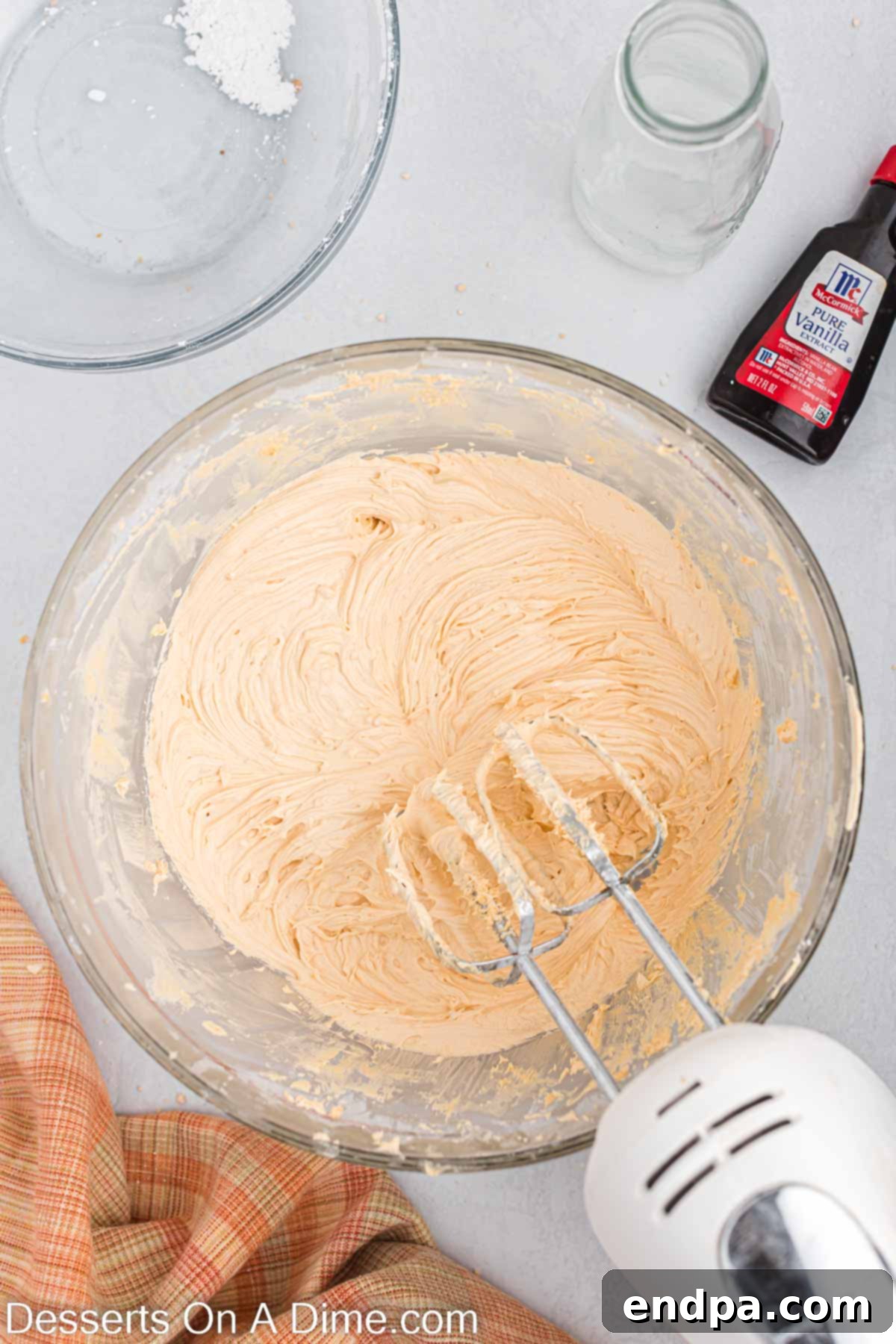
Step 6 – Make the Butterscotch Frosting: In a large mixing bowl, beat the softened butter with an electric mixer until it’s light and fluffy, about 2-3 minutes. This incorporates air, making the frosting airy. Gradually add the slightly cooled melted butterscotch chips to the butter, mixing on low speed until just combined. Next, begin adding the sifted powdered sugar, about ½ cup at a time, mixing on low to medium speed until fully incorporated and smooth. Finally, add the vanilla extract and milk, beating until the frosting is wonderfully light, fluffy, and spreadable, usually for another 2-3 minutes on medium-high speed. If the frosting is too thick, add a tiny bit more milk, one teaspoon at a time; if too thin, add more powdered sugar.
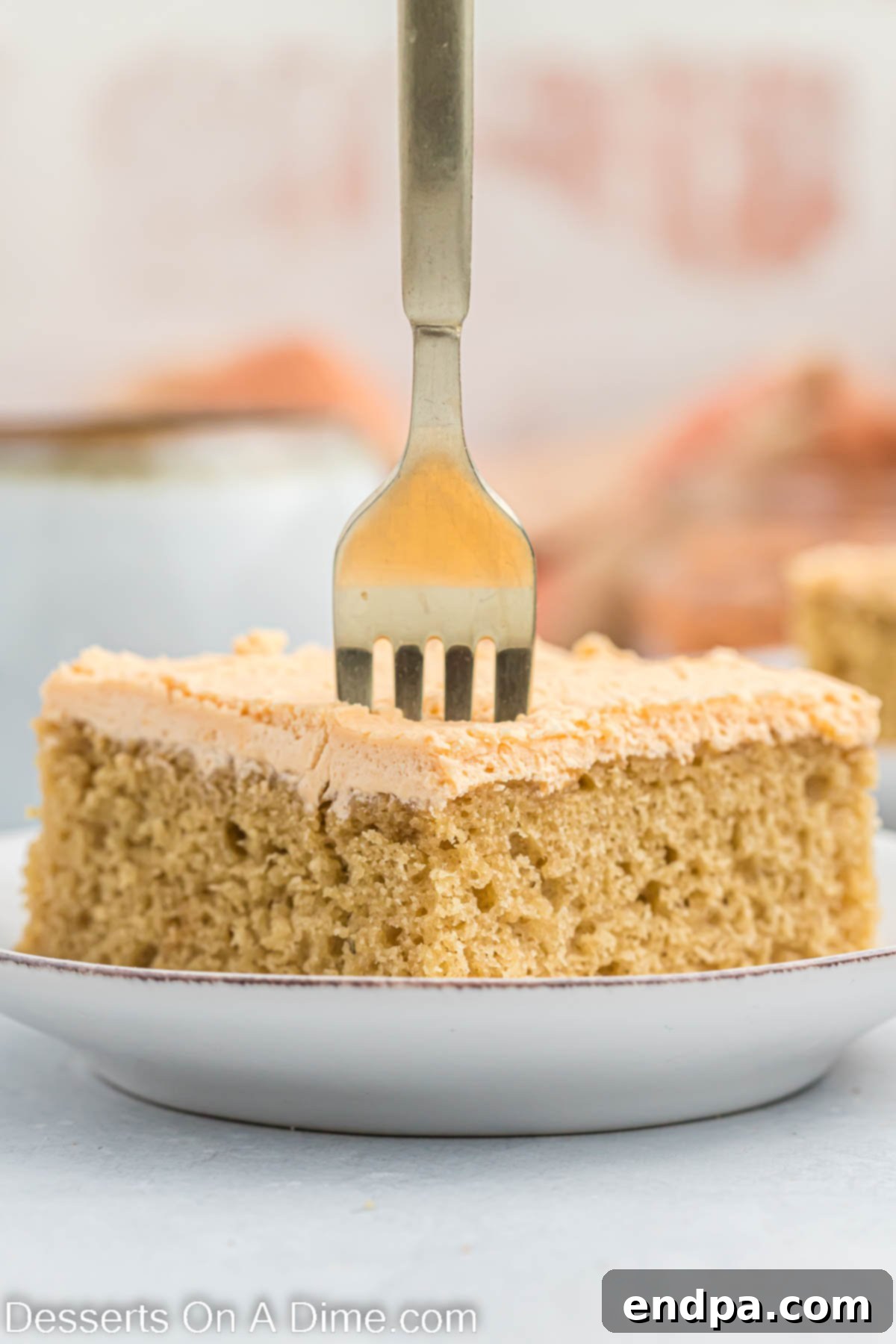
Step 7 – Frost and Serve: Once your cake has completely cooled (this is critical to prevent the frosting from melting), generously spread the prepared butterscotch buttercream frosting evenly over the top of the cake. An offset spatula works wonders for achieving a smooth, professional finish. Now, your magnificent homemade butterscotch cake is ready to be sliced, served, and savored!
Expert Baking Tips for Success
Achieving a consistently perfect cake is an art, but these pro tips will ensure your butterscotch cake turns out exceptionally every time:
- Embrace Room Temperature Ingredients: This tip cannot be overstated. Ensuring all dairy products and eggs are at room temperature is fundamental. Warm ingredients emulsify more effectively, creating a smoother, more uniform batter that traps air better. This leads to a higher rise and a significantly lighter, fluffier cake. Plan ahead by taking them out of the refrigerator at least 30-60 minutes before you start baking.
- The Power of Dark Brown Sugar: While light brown sugar can be used in a pinch, dark brown sugar is highly recommended for this recipe. Its higher molasses content not only contributes to the cake’s signature rich, deep caramel flavor but also adds extra moisture, making for an even more tender crumb.
- Always Use Real Butter: For the best flavor and texture, stick to real butter. Margarine or butter substitutes simply won’t yield the same rich, creamy taste and luxurious texture in both the cake and the frosting. Real butter is key to that authentic, decadent butterscotch experience.
- Check Your Leavening Agents: Baking powder and baking soda are vital for the cake’s rise. Always check their expiration dates before baking. Expired leavening agents can lead to a dense, flat cake. You can test baking soda by adding a bit to vinegar (it should fizz) and baking powder by adding it to hot water (it should fizz).
- Quality Butterscotch Chips Matter: The flavor of your frosting heavily relies on the quality of your butterscotch chips. Opt for a reputable brand to ensure a rich, authentic butterscotch taste that isn’t overly sweet or artificial.
- Patience with Cooling: It’s tempting to frost a warm cake, but resist the urge! The cake must be completely cool before frosting. Applying frosting to a warm cake will cause it to melt, slide off, and create a messy, unappealing result. A wire rack helps speed up the cooling process.
- Baking Pan Versatility: While a 9×13-inch pan is specified, you can adapt this recipe to other pans. A jelly roll pan will yield a thinner cake, requiring a reduced baking time (start checking at 20-25 minutes). If using round cake pans for layers, you might need to adjust quantities and baking times. Always adjust baking time and monitor for doneness.
- Enhance with Nuts: For an added layer of texture and flavor, consider folding in a handful of chopped pecans or walnuts into the batter before baking. Lightly toasting the nuts beforehand can intensify their flavor.
- Avoid Overmixing: Once you add the flour to the wet ingredients, mix only until just combined. Overmixing develops the gluten in the flour, which can lead to a tough, dry cake. A few small lumps of flour are better than an overmixed batter.
- Sift for Smoothness: Sifting your all-purpose flour can prevent lumps and further aerate the mixture, contributing to a lighter cake. Similarly, sifting powdered sugar for the frosting is essential for a silky-smooth, lump-free buttercream.
Storage and Make-Ahead Options
This delightful butterscotch cake can be enjoyed fresh or prepared in advance, making it a convenient choice for any occasion. Proper storage ensures its deliciousness lasts longer.
Storing Leftover Cake:
To keep your leftover cake moist and fresh, store it covered tightly at room temperature. It will remain wonderfully delicious for up to 3-4 days. Placing a piece of plastic wrap directly onto any cut surfaces can help prevent it from drying out.
Freezing Your Butterscotch Cake:
This cake also freezes beautifully, making it perfect for preparing ahead of time or enjoying a smaller portion later. For best results:
- Unfrosted Cake: Allow the baked cake to cool completely. Wrap it tightly in several layers of plastic wrap, then an additional layer of aluminum foil. This dual protection helps prevent freezer burn.
- Frosted Cake: If the cake is already frosted, first place it in the freezer uncovered for about 1-2 hours, or until the frosting is firm. This prevents the frosting from sticking to the wrapping. Once firm, wrap it in plastic wrap and then foil, similar to the unfrosted cake.
Store the wrapped cake in an airtight freezer-safe container or bag for up to 3 months. When you’re ready to enjoy it, thaw the cake overnight in the refrigerator, then let it come to room temperature before serving for the best texture and flavor. If you froze an unfrosted cake, apply the icing once it has thawed and is ready to serve.
The Science Behind Room Temperature Ingredients
You’ve likely seen the instruction “room temperature ingredients” in countless baking recipes, but have you ever wondered why it’s so important? It’s far from a trivial step; it makes a significant impact on the final outcome of your butterscotch cake, influencing its texture, rise, and overall quality.
Here’s the science explained:
- Better Emulsification: When ingredients like butter and eggs are at room temperature, they are softer and more pliable. This allows them to easily emulsify (combine smoothly and uniformly) with other ingredients, especially fats and liquids. Cold butter, for instance, won’t cream properly with sugar, resulting in a lumpy mixture. Room temperature butter, however, creates a smooth, consistent base for the batter.
- Superior Air Incorporation: The creaming of butter and sugar is a critical step for incorporating air into the batter, which is essential for a light and fluffy cake. Room temperature butter has tiny air pockets within its structure. As you beat it with sugar, the sugar crystals cut into the butter, trapping more air. Cold butter, being hard, won’t incorporate air as effectively, leading to a denser cake. Room temperature eggs also contribute to this by increasing the batter’s capacity to hold air.
- Smooth, Homogeneous Batter: When all ingredients are at a similar temperature, they combine more readily and create a smoother, more homogeneous batter. This prevents curdling (especially when adding eggs to butter and sugar) and ensures that all ingredients are evenly distributed throughout the mixture. A uniform batter bakes more evenly, resulting in a consistent texture from edge to center.
- Even Baking: A homogeneous batter with well-emulsified ingredients promotes even heat distribution during baking. This leads to a cake that bakes uniformly, avoiding raw centers or overcooked edges. In contrast, a batter made with cold ingredients can have pockets of varying temperatures, leading to an unevenly baked cake.
- Enhanced Leavening: Room temperature eggs and dairy products also support the leavening process. They help to create a tender structure that allows the gases produced by baking soda and baking powder to expand effectively, contributing to the cake’s impressive rise and open crumb structure.
In essence, taking the extra time to bring your ingredients to room temperature is a simple yet profoundly impactful step that transforms a good cake into a truly great, light, and fluffy one.
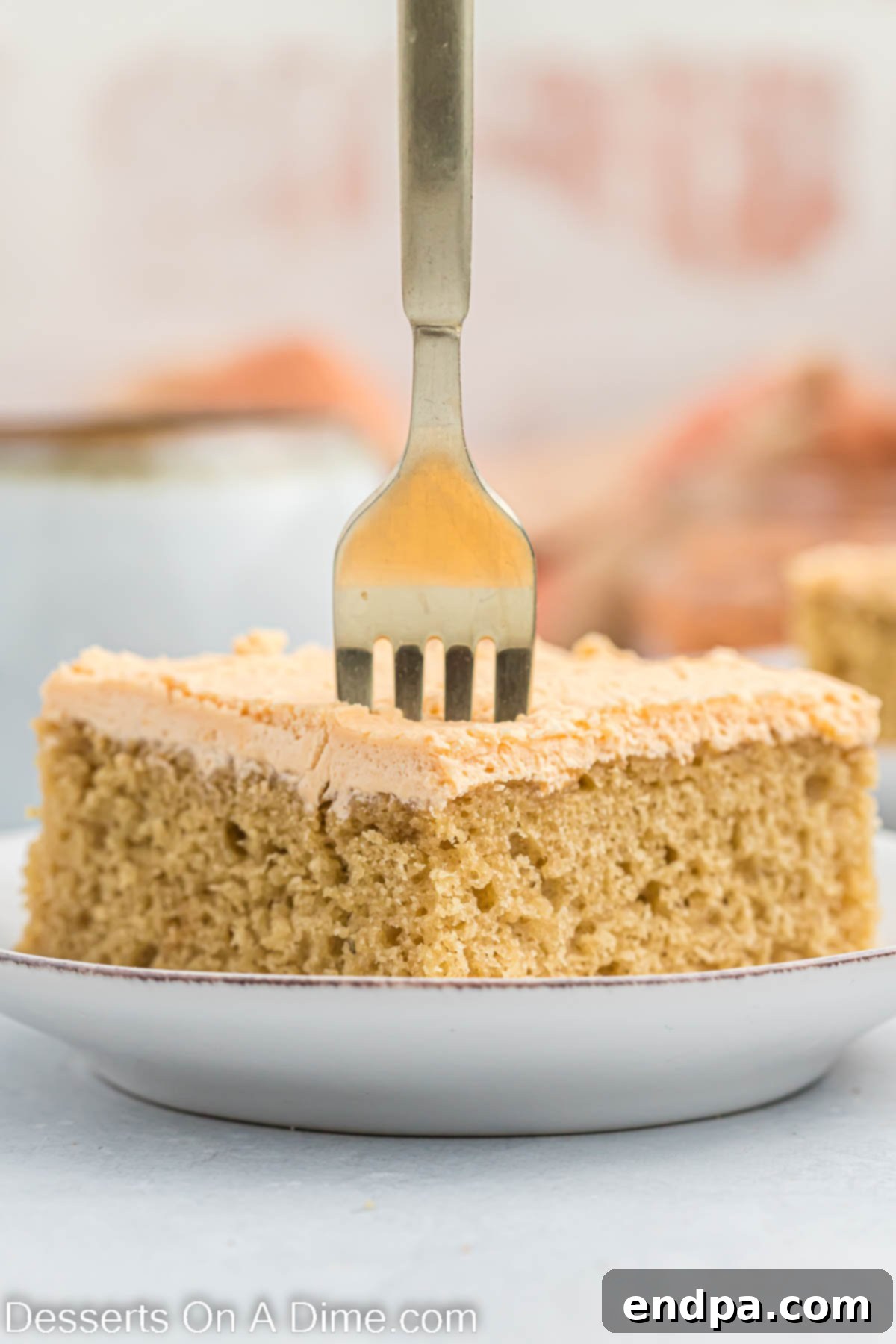
Frequently Asked Questions (FAQ)
What exactly is butterscotch?
Butterscotch is a type of confectionary where the primary ingredients are brown sugar and butter, similar to toffee but typically made by boiling sugar and butter together to a lower temperature, resulting in a softer, chewier, or more pourable texture. Its rich, caramelized, and buttery flavor makes it a beloved ingredient in many desserts.
Can I make this butterscotch cake in advance?
Absolutely! This cake is excellent for making ahead. You can bake the cake layers (or the sheet cake) a day or two in advance, wrap them tightly once cooled, and store them at room temperature. The frosting can also be made a day ahead and stored in an airtight container in the refrigerator; just whip it again briefly before frosting. For longer storage, refer to the freezing instructions above.
Can I use a different size baking pan?
Yes, you can. A 9×13 inch pan yields a standard sheet cake. If you use a different size, you may need to adjust the baking time. For example, a larger, thinner pan (like a jelly roll pan) will require less baking time, while smaller, deeper pans (like round cake pans for a layered cake) will require more. Always use the toothpick test to determine doneness.
How do I prevent my cake from being dense?
Several factors contribute to a light and fluffy cake:
- Ensure all ingredients are at room temperature for proper emulsification and air incorporation.
- Do not overmix the batter, especially after adding the flour, as this develops gluten and can make the cake tough.
- Ensure your baking powder and baking soda are fresh and active.
- Accurately measure your flour (spoon and level, don’t scoop directly).
Can I add other mix-ins to the cake batter?
Yes, you can! Chopped nuts (pecans or walnuts are excellent choices), chocolate chips, or even a swirl of caramel sauce can be folded into the batter just before baking for an added twist. If using nuts, consider toasting them lightly beforehand to enhance their flavor.
More Irresistible Butterscotch Recipes
If you’ve fallen in love with the rich, buttery goodness of butterscotch, there’s a whole world of delightful treats waiting for you to explore:
- Butterscotch Fudge: A melt-in-your-mouth confection that’s incredibly easy to make and perfect for gifting or a quick sweet fix.
- No-Bake Butterscotch Delight Recipe: Layers of creamy, dreamy butterscotch goodness without ever turning on your oven. A perfect dessert for warm weather or when you need something quick and easy.
- Butterscotch Bars Recipe: Chewy, buttery, and utterly satisfying, these bars are a fantastic portable dessert for parties or lunchboxes.
Go ahead and try this easy yet incredibly rewarding butterscotch cake recipe today. It is truly fantastic and guaranteed to be a hit!
Butterscotch Cake Recipe
Butterscotch Cake Recipe is a luscious dessert topped with rich butterscotch frosting. Learn how to make this light and fluffy homemade cake.
Ingredients
For the Cake:
- 2 1/4 cups All Purpose Flour
- 1 Tablespoon Baking Powder
- 1/2 teaspoon Baking Soda
- 1/2 teaspoon Salt
- 3/4 Cup Unsalted Butter softened at room temperature
- 1 1/4 cup Dark Brown Sugar packed
- 4 Large Eggs room temperature
- 3/4 cup Whole Milk room temperature
- 1 Tablespoon Vanilla Extract
- 1/2 cup Sour Cream room temperature
For the Frosting:
- 1 cup Butterscotch Chips
- 1/4 cup Unsalted Butter softened
- 3 cups Powdered Sugar
- 1 teaspoon Vanilla Extract
- 5 Tablespoons Milk
Instructions
For the Cake:
- Preheat the oven to 350 degrees F (175°C) and spray a 9X13 baking pan with a non-stick cooking spray.
- In a medium-sized bowl, whisk together the dry ingredients for the cake: flour, baking powder, baking soda, and salt.
- In a separate mixing bowl, cream together the butter and brown sugar with a stand mixer or hand-held mixer until light and fluffy (3-5 minutes).
- Then add in the eggs, one at a time, beating until they are fully combined after each addition. Once combined, add the milk and vanilla extract, mixing until just incorporated.
- Mix in half of the dry ingredients until just combined. Then stir in half of the sour cream. Repeat with the remaining dry ingredients and sour cream, mixing until just combined.
- Spread the batter evenly into the 9X13 baking dish and bake for 30-40 minutes, or until a toothpick inserted into the center of the cake comes out clean. Let the cake cool completely on a wire rack.
For the Frosting:
- Melt the butterscotch chips by microwaving them in 30-second intervals, stirring after each interval until fully melted and smooth. Let the melted chips sit for 5-10 minutes to cool slightly.
- Beat the softened butter in a mixing bowl with an electric mixer until light and fluffy. Then add in the slightly cooled melted butterscotch chips and mix until just combined.
- Gradually add the powdered sugar into the mixture (½ cup at a time) until fully mixed in. Then add in the vanilla extract and milk. Whip the frosting for 3 minutes until it is light and fluffy.
- Once the cake has fully cooled, top it with the butterscotch frosting and smooth it out with an offset spatula.
- The cake is now ready to cut, serve, and enjoy!
Recipe Notes
Make sure that all the ingredients are at room temperature so that they mix well for this cake recipe.
Store the leftover cake covered at room temperature for up to 3-4 days.
Dark brown sugar is best for this recipe for the flavor, but you can use light brown sugar if that’s all that you have available.
Nutrition Facts
Carbohydrates 102g,
Protein 6g,
Fat 24g,
Saturated Fat 14g,
Polyunsaturated Fat 1g,
Monounsaturated Fat 6g,
Trans Fat 1g,
Cholesterol 126mg,
Sodium 415mg,
Potassium 153mg,
Fiber 1g,
Sugar 78g,
Vitamin A 793IU,
Vitamin C 0.1mg,
Calcium 158mg,
Iron 2mg
